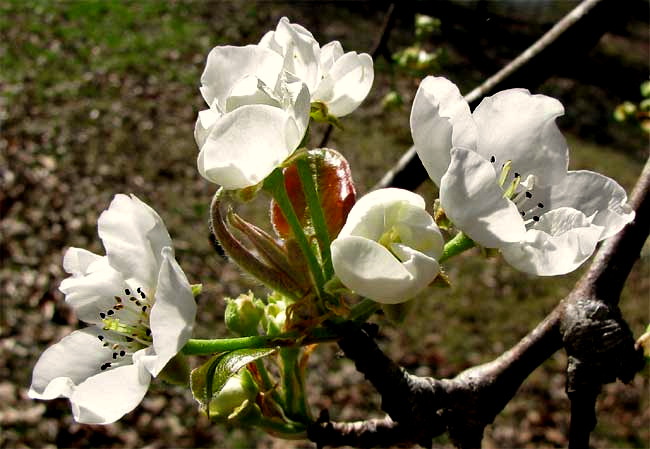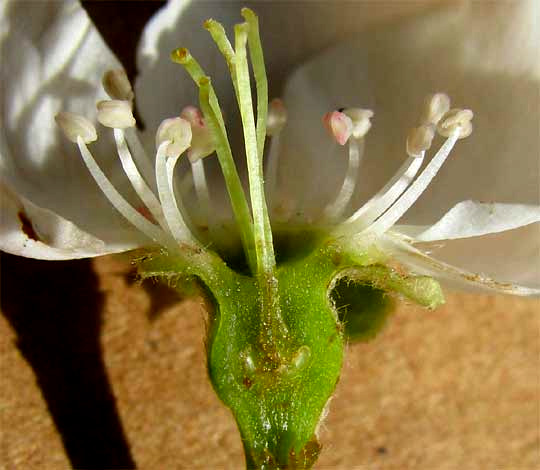Excerpts from Jim Conrad's
Naturalist Newsletter

from the the March 9, 2009 Newsletter, issued from the forest near Natchez, Mississippi; elevation ~400ft (120m), ~N31.47°, ~W91.29°:
PEAR TREES FLOWERING
Plum trees, bodaciously white-flowered the last couple of weeks, now are fading, presenting a diffuse, greenish-brown appearance. However, pears trees, Pyrus communis, have come online to take their place and are just as pretty, though esthetically very different. The plums were high-contrast black and white, seemingly etched against cold, crystalline, blue sky. Pear blossoms harmonize with a warmer, more easy going world, seen above.
Plums and pears are both members of the big Rose Family, and the flowers of both are white with five petals that get knocked off by raindrops, and with many stamens in their centers, so what are the main differences between them?
 The most profound structural difference is that plum blossoms have superior ovaries while pear flowers have inferior ones. A diagram differentiating the two types is at the right.
The most profound structural difference is that plum blossoms have superior ovaries while pear flowers have inferior ones. A diagram differentiating the two types is at the right.
The hyacinth flower we looked at above has a classic superior ovary: The ovary arises above the platform formed by the stamen-bearing perianth beneath it. Pear blossoms are inferior, with the ovary residing below the attachments with anthers and sepals, as shown below:

In that picture the numerous, incurving, matchstick- like items are male stamens. The spherical, green mass at the bottom is the sliced-across female ovary. The five greenish, stiff-looking, slender things entering the ovary from above are stigma-topped styles. At the style "roots" deep inside the ovary you can see at least one pale, oval ovule. Eventually that ovule becomes a pear seed and the ovary itself mature into a pear fruit.
In the Rose Family, fruits developing from inferior ovaries are called pomes. A pome is a fleshy fruit formed from an inferior ovary with several locules. Locules are the pie-serving-shaped chambers seen when you cut across a tomato, for instance. Pear flowers have 2-5 locules.